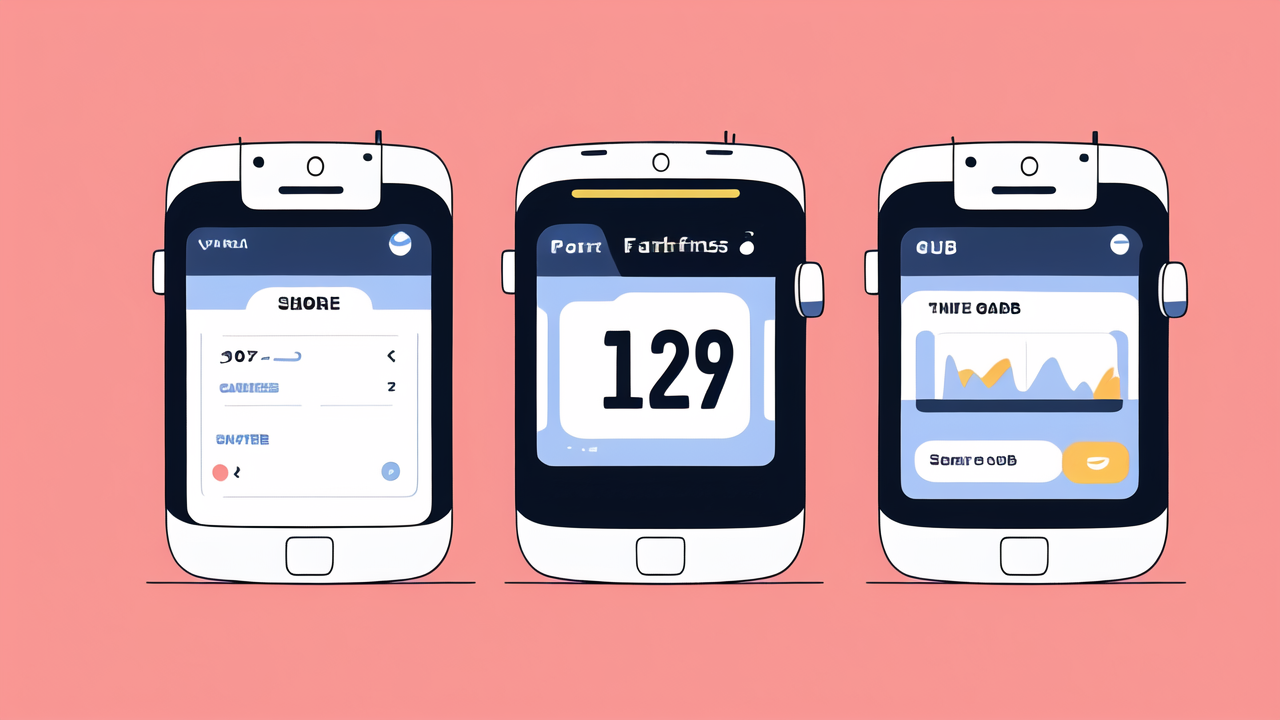Understanding the Role of Smart Watches in Athletic Performance
Why Smart Watches are Essential for Modern Athletes
Smart watches have become indispensable tools for athletes. They offer real-time data tracking, which is crucial for performance optimization. These devices provide instant feedback on vital metrics like heart rate, pace, and distance covered.

Smart watches also help athletes set and monitor goals. They can track progress over time, allowing for data-driven training adjustments. Many models offer GPS functionality, enabling precise route tracking and navigation during outdoor activities.
Another key benefit is the ability to stay connected without a phone. Athletes can receive notifications, messages, and even make calls directly from their wrist. This feature is especially useful during long training sessions or competitions.
Smart watches also serve as motivational tools. They often include features like activity reminders and achievement badges. These encourage consistent training and help athletes stay accountable to their fitness goals.
Key Metrics and Data that Athletes Need from a Smart Watch
Athletes rely on smart watches to track several crucial metrics. Heart rate monitoring is perhaps the most important. It helps athletes gauge their effort level and train within specific heart rate zones.
Distance and pace tracking are essential for runners, cyclists, and swimmers. These metrics help athletes maintain consistent performance and track improvements over time.
Many smart watches now offer advanced metrics like VO2 max estimation. This data gives insights into an athlete's overall fitness level and aerobic capacity.
Sleep tracking is another valuable feature. Quality sleep is crucial for recovery and performance. Smart watches can monitor sleep patterns, helping athletes optimize their rest periods.
Some watches also track metrics like cadence for runners or stroke count for swimmers. These detailed insights can help athletes refine their technique and improve efficiency.
Calorie burn estimation is useful for athletes managing their weight or nutrition. It helps in planning meals and ensuring proper fueling for training and competition.
Top Smart Watches for Athletes in the United States
Analyzing the Best Smart Watches for Tracking and Training
The US market offers several top-notch smart watches for athletes. The Apple Watch Series 7 is a popular choice. It offers comprehensive health tracking and seamless integration with iOS devices.

Garmin's Forerunner series, especially the 945, is favored by serious runners and triathletes. It provides advanced metrics and long battery life. The Fitbit Sense is another strong contender, known for its stress management features.
For outdoor enthusiasts, the Suunto 9 Baro offers rugged design and excellent battery life. The Polar Vantage V2 is praised for its recovery tracking capabilities, making it ideal for high-intensity training.
These watches vary in features, but all offer robust activity tracking. They provide accurate GPS, heart rate monitoring, and multi-sport modes. Many also include advanced features like altimeters and compass.
How to Choose the Right Smart Watch for Your Sport
Selecting the right smart watch depends on your specific athletic needs. Consider the primary sports you engage in. Runners might prioritize GPS accuracy and battery life. Swimmers need water resistance and stroke tracking.
Battery life is crucial for endurance athletes. Some watches offer weeks of battery in basic mode. Others last only a day or two with full features enabled. Think about how often you're willing to charge your device.
Consider the watch's compatibility with your other devices and apps. Some watches work better with certain smartphones or training platforms. Ensure the watch can sync with your preferred fitness apps.
Display size and type are important factors. Larger displays are easier to read during workouts. However, they may feel bulky on smaller wrists. Touch screens offer intuitive navigation but can be tricky to use with sweaty hands.
Smart Watch Integration with Popular US Athletic Apps
Most smart watches integrate seamlessly with popular fitness apps. Strava is a favorite among cyclists and runners. It allows users to track routes, compete with friends, and analyze performance data.
MyFitnessPal is widely used for nutrition tracking. Many smart watches can sync activity data with this app. This integration helps athletes balance their calorie intake with their energy expenditure.
Training Peaks is popular among serious athletes and coaches. It offers detailed analysis of workouts and long-term performance trends. Many high-end smart watches can export data directly to Training Peaks.
Nike Run Club and Adidas Running are also compatible with various smart watches. These apps offer guided runs and community features. They sync easily with most major smart watch brands.
Apple Health and Google Fit serve as central hubs for health and fitness data. Most smart watches can integrate with these platforms. This allows for a comprehensive view of an athlete's health and activity.
Advanced Features and Benefits of Smart Watches for Athletes
The Impact of Wearable Technology on Training Regimens
Wearable technology has revolutionized athletic training. Smart watches provide constant access to performance data. This allows athletes to make real-time adjustments to their training intensity.

Many watches now offer personalized training plans. These adapt based on an athlete's progress and recovery status. This dynamic approach helps prevent overtraining and optimizes performance gains.
Smart watches enable more precise interval training. Athletes can set alerts for specific heart rate zones or pace targets. This helps maintain the right intensity throughout workouts.
Recovery tracking is another key benefit. Many watches monitor metrics like heart rate variability and sleep quality. This data helps athletes balance training stress with adequate recovery time.
Some advanced watches offer features like running power metrics. These provide insights into running efficiency and form. Such data can help athletes improve their technique and prevent injuries.
Smart Watches as Tools for Injury Prevention and Recovery
Smart watches play a crucial role in injury prevention. They can alert athletes to signs of overtraining. This includes abnormal heart rate patterns or sudden drops in performance metrics.
Many watches track running dynamics like ground contact time and vertical oscillation. These metrics can highlight form issues that may lead to injury. Athletes can use this data to adjust their technique.
Recovery features in smart watches are invaluable for injury prevention. Sleep tracking helps ensure athletes get enough rest. Some watches even offer guided breathing exercises to reduce stress.
For athletes recovering from injury, smart watches provide a safe way to monitor activity. They can set limits on intensity and duration. This helps prevent re-injury during the rehabilitation process.
Some watches now include ECG sensors. These can detect irregular heart rhythms, potentially catching serious issues early. While not a substitute for medical care, this feature adds an extra layer of health monitoring.
Future Trends in Athletic Wearables and Their Potential Impact on Performance
The future of athletic wearables looks promising. We're likely to see more advanced sensors and metrics. This could include real-time blood glucose monitoring or hydration status tracking.
Artificial intelligence will play a bigger role in smart watches. AI could provide more personalized training recommendations. It might even predict potential injuries based on subtle changes in performance data.
Augmented reality features may become more common. Watches could project performance data or navigation cues directly into an athlete's field of vision. This could enhance training and competition experiences.
Battery technology is set to improve. We may see smart watches with weeks-long battery life, even with all features enabled. This would be a game-changer for endurance athletes and outdoor enthusiasts.
Integration with other smart devices will likely expand. Watches might communicate with smart shoes or clothing. This could provide even more detailed biomechanical data for performance analysis.
As technology advances, smart watches will become even more integral to athletic training and performance. They will continue to push the boundaries of what's possible in sports tracking and analysis.




Leave a comment
This site is protected by hCaptcha and the hCaptcha Privacy Policy and Terms of Service apply.